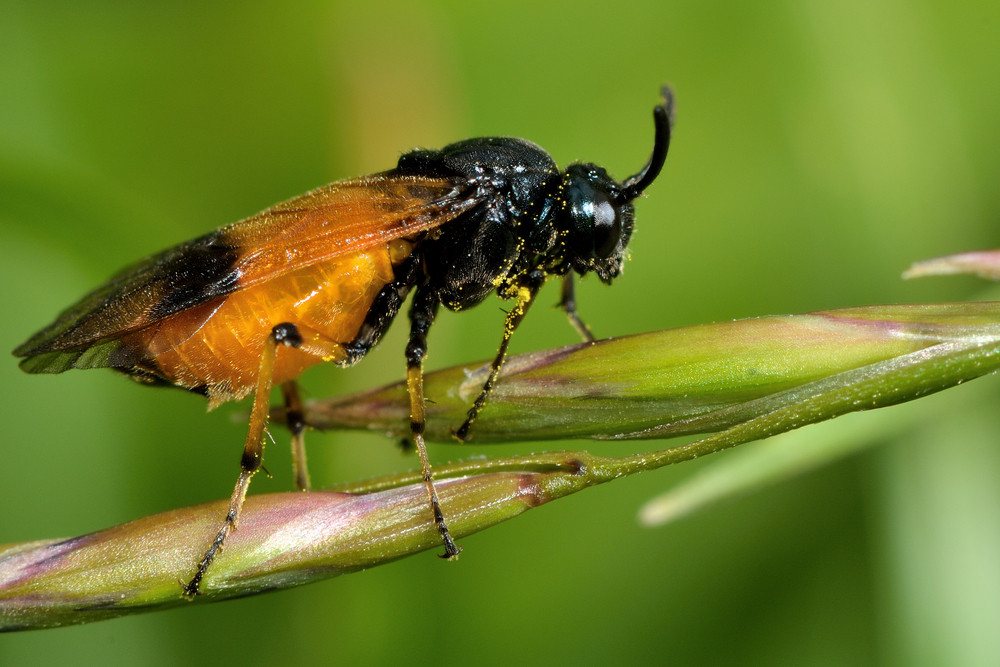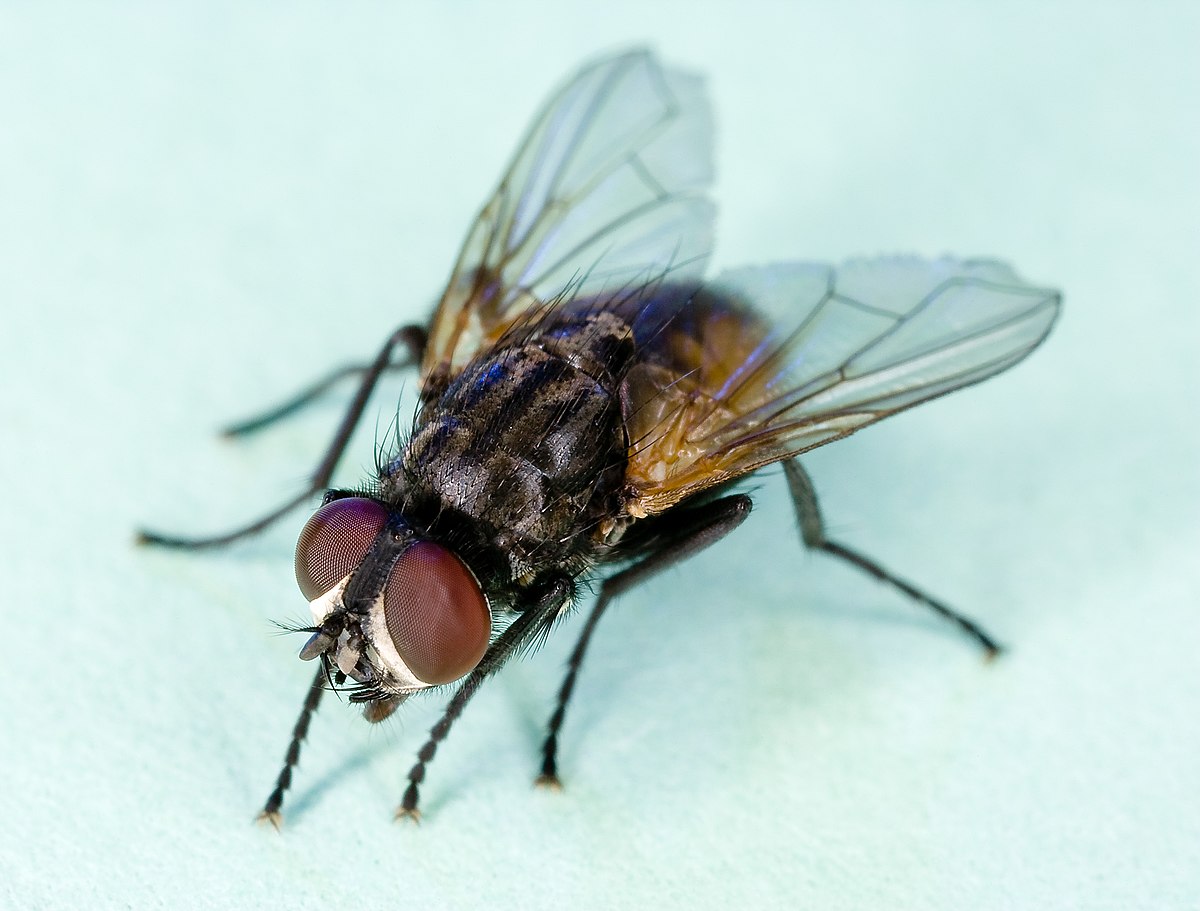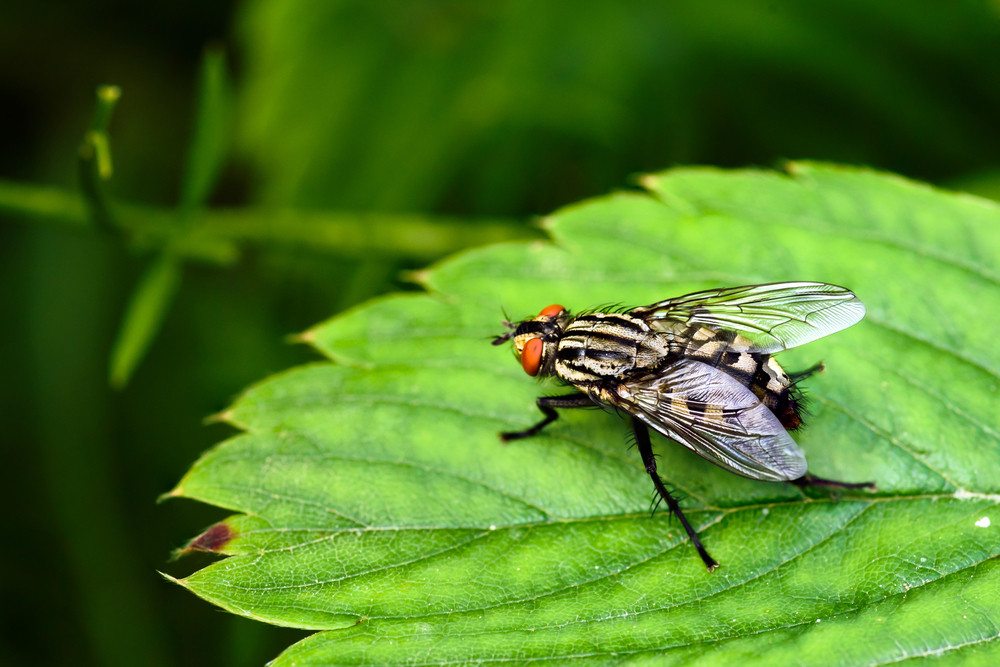Flies are a nuisance but not all flies are created equal. You may not realize it but the flesh fly is actually smaller than your average fly. Your average house fly can carry in excess of 60 diseases. However, flesh flies are far more dangerous.
This type of fly can be found in both rural settings and urban, if you suspect you have an issue with the then a call to the local pest control company is essential.
The Look

The flesh fly is between 10 and 22mm long, depending on the exact species of flesh fly. They start life as a yellowish maggot and then develop pointed heads during the larva stage. By the time they are fully grown, they will be gray with 3 black stripes across their body.
Location
Surprisingly there are flesh flies in most places across the world; they don’t discriminate regarding where they can live and what they feed on. Fortunately, they are not common visits to homes; although they do feed on decaying food matter and animal flesh.
As with most flies, the flesh fly doesn’t actually bite you. Instead, it introduces acid to your skin which helps it to liquefy, allowing the fly to suck up its dinner.
Despite the name, these flies do not generally bury themselves into your flesh and start eating. But, they can carry leprosy bacilli; which is why it’s important to take prompt action via a good local exterminator; if you think you have an issue.
There have been some cases where the flesh fly has burrowed into an open wound on healthy livestock. If humans eat food contaminated with these larvae then they are likely to suffer from intestinal pseudomyiasis.
Disease List

Although this type of fly is not generally an issue it is worth noting the various disease that can be carried by the flesh fly:
Leprosy Bacilli
This is also known as Hansen’s disease. You may not show symptoms for between 5 and20 years. However, when the symptoms do start to develop you’ll have granulomas of your nerves, skin, eyes, and respiratory tract.
This reduces your ability to feel pain and is likely to result in untreated injuries as well as weakness and reduced eyesight.
Intestinal Pesudomiasis

This is the name of the disease when you accidentally ingest fly larvae. Again there are many different versions of this illness. You’re most likely to notice the issue in your children who will be tired, losing weight, becoming weak, and start to look ill. If this happens you’ll need to suspect a fly issue and get the doctor to check it out as soon as possible.
If you are infected by the flesh fly then you’ll first notice an itchy sore on your skin. This will quickly turn into a boil which is extremely sensitive to the touch and is likely to ooze pus.
Don’t forget, the flesh fly will also breed in carrion, dung, or other decaying material; this opens the opportunity for them to carry bacteria on their feet and leave it anywhere for you.
